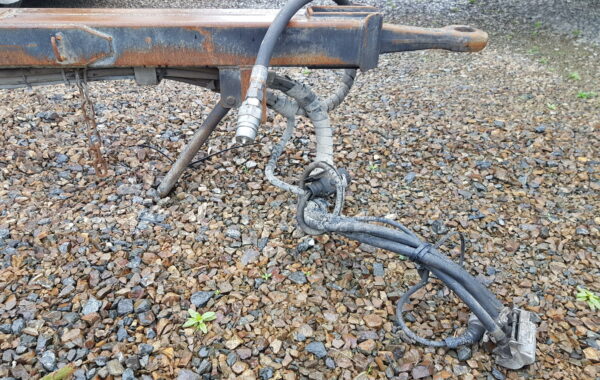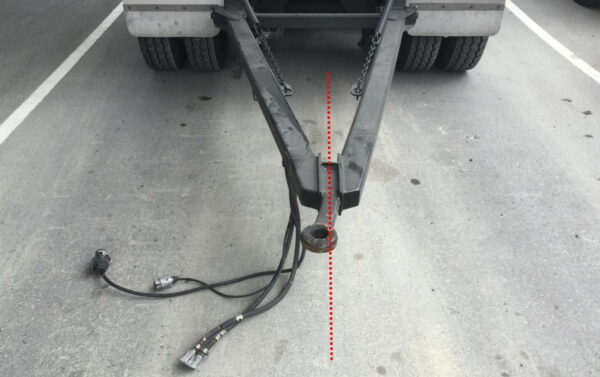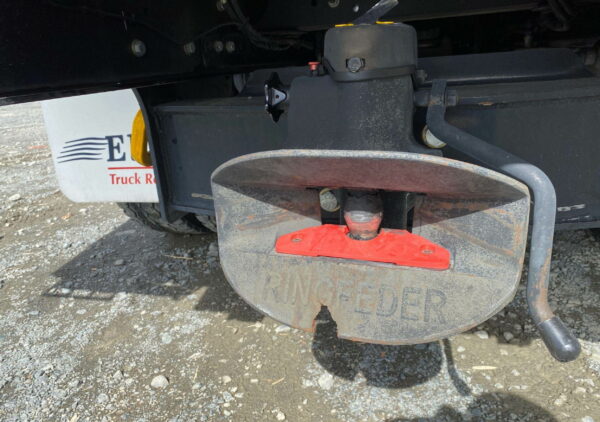A drawbar trailer is a convenient way to extend the cargo capacity of a rigid truck when required, without having to constantly pull a half-empty semitrailer.
Drawbar trailers have a specific method to couple them with the towing vehicle (this could be a rigid lorry or a prime mover/tractor unit that has the correct coupling). The drawbar towing eye fits inside the jaws of the coupling unit and a pin drops through the eye.
Damage can be caused by clumsy or aggressive coupling techniques, manoeuvring outside of the range of the coupling, and poor maintenance and care of the parts.
Cables and air lines
When not coupled, cables and air lines should be draped over the drawbar or inserted into dummy sockets (if available). Leaving them on the ground makes it easy for dirt and water to enter the connectors which then causes issues. The cables and lines themselves can be trampled upon which wears the outer sheath.

Towing eye damage
Reversing too fast into the jaws can squash the towing eye meaning the pin won’t drop through. Reverse slowly until the trailer is coupled.
Shock loading the towing eye or exceeding its capacity can elongate it.
Drawbar damage
Jackknifing the trailer, which we covered in the article about drawbeam trailers, is a valid operation in certain circumstances, but taking it too far bends the end of the drawbar resulting in a repair that costs several thousand.

Jackknife sensors can warn the driver if the limits of the jackknife have been exceeded. Excess pressure on the drawbar like this is also likely to damage the coupling.
Coupling damage
Aggressive reversing can break or bend the funnel which directs the towing eye into the jaw.

Ensure that the drawbar is the correct height before backing up, and don’t go too fast.
Drivers must learn how to connect a trailer correctly. The cost of a training course is tiny compared to the cost of damaging the trailer or freight.
